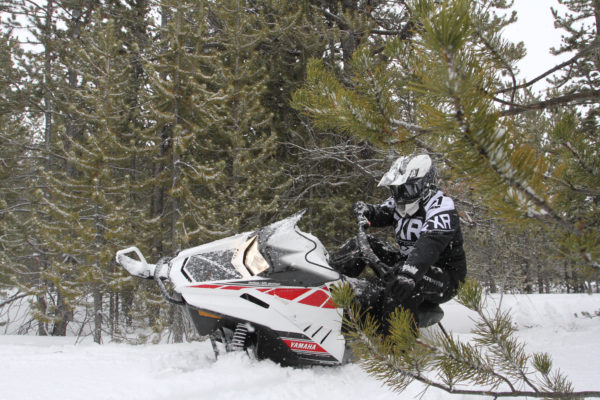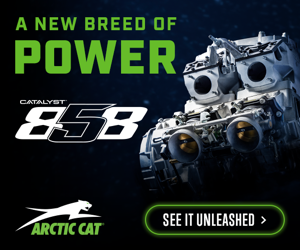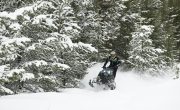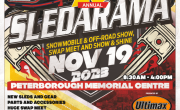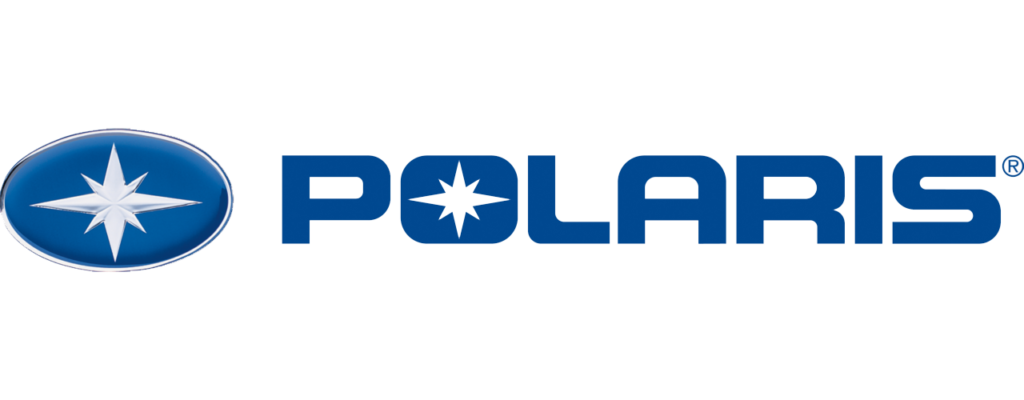Small in size, right in price, and tasked with a level of responsibility unlike any sled in recent memory. The 2018 Yamaha SnoScoot, and different hued sibling Arctic Cat ZR200, is without question, the most significant snowmobile to hit the industry in the past 10-years…maybe longer. To be clear, the appeal of the SnoScoot isn’t about technology, it’s also not entirely about size, although the shrunken scale does play an important role. Instead, the SnoScoot is poised to rekindle the true spirit of snowmobiling with long time enthusiasts, and in the same breath, potentially introduce that same spirit and allure to an entirely new generation of riders.
If the SnoScoot is successful, the industry will be singing the praises of this pint-size sled for years to come. Sled of the year? More like sled of the decade.
For now however, all this is little more than wishful praise. The SnoScoot is currently the “tweener” sled many enthusiasts have been asking for ever since the first SnoScoot left us after a four-year run in 1992. And if early interest holds water at the dealership, the first run of SnoScoots will be long gone before first snow hits.
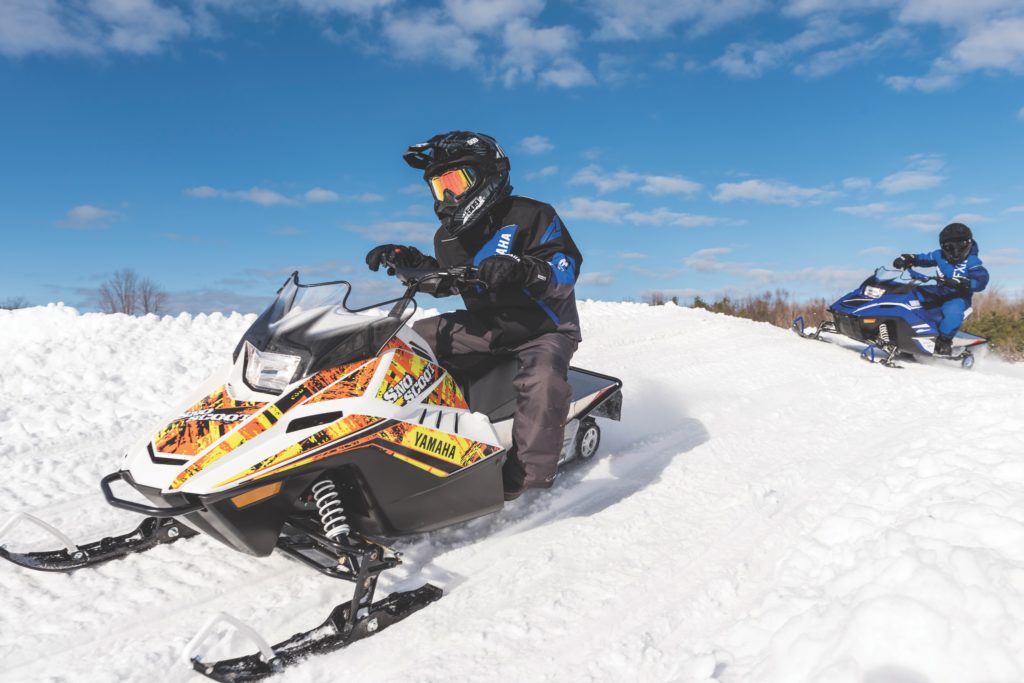
Obviously, this isn’t the first time an entry level or youth-focused snowmobile has been introduced with aspirations of attracting new riders to the sport. The original SnoScoot, the Yamaha Inviter, and the Ski-Doo Freestyle, to name just a few, all hoped to broaden the appeal of snowmobiling. Each one of those endeavors failed to deliver for a multitude of reasons, ranging from poor product, misguided marketing, or bad timing. But for the new 200, the moment seems right, and the product is spot on.
On paper, the SnoScoot looks to be little more than a powered up 120, but aside from sharing the front cowl and belly-pan from its smaller sibling, this is a completely different and much more competent vehicle. To put it bluntly, the 200 is a “real” snowmobile. Power comes from a 200cc single 4-stroke, which came from Yamaha’s generator line-up, and received some massaging in order to deliver just over 9-horsepower at 5,400rpm. The motor has all the extras to ensure it’s durable and easy to use as well, including integrated compression relief, electronic ignition, and a high-output magneto. This added charge ensures the sled can operate a bright halogen headlamp, LED taillight, and standard hand warmers.
Perhaps the most important technical aspect of the new 200 is the drive system. Unlike the original SnoScoot, the new version features a full-functioning rpm sensing primary, and a composite roller cam secondary. Joining this big sled type system is a jackshaft to an enclosed rubber drive belt (replacing the traditional chain and sprockets), giving the sled the mechanical gearing advantage it needs, while creating a lightweight, maintenance free design. This combination delivers true up-shift and back-shift, which in turn makes the new 200 deep snow capable, even for adults who want to see what the hooting and hollering is all about.
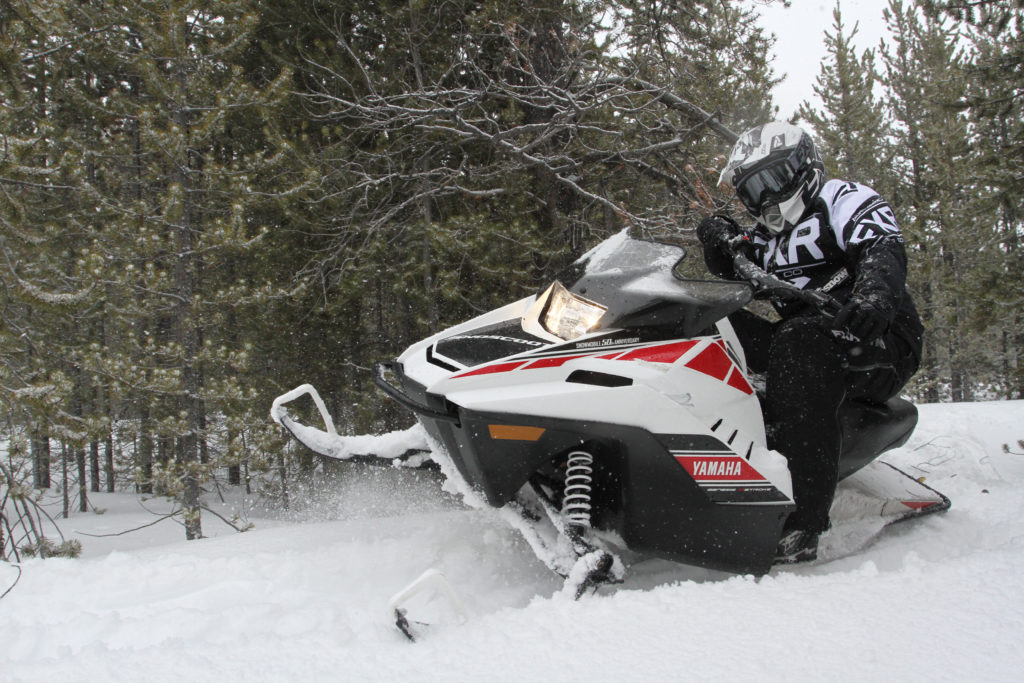
The full-size tech doesn’t stop there. Down where the action happens, a slide-rail suspension delivers an impressive 8.5-inches of travel and supports a 90-inch Camso Cobra track with 1-inch lugs. Joining this system to the front is a double A-arm suspension with 4.5-inches of travel and composite plastic skis. The vehicle is lightweight, and has ample torque with legit clutching, and enough track on the ground to deliver the necessary flotation, which makes the SnoScoot a go anywhere sled, even with an adult at the controls.
This past spring, the OSM crew had a chance to sample the SnoScoot and its sibling ZR200 in deep snow and thin air conditions, and we were absolutely blown away at where this little sled could take our 200-pound plus frames. This isn’t about speed, busting drifts, monster holeshots, carving corners, or bombing ditchlines. The SnoScoot is about one simple attribute…having fun.
Of course, what the 200 really represents is a vehicle for youth… a missing link between 120s and full-size sleds. Perhaps even more importantly, the 200 has the potential to break down barriers and represents a back yard, adjacent park, or open field, winter-time fun machine for suburban families looking to embrace winter. Remember those winter days riding the family sled around the yard for hours on end? The SnoScoot brings that opportunity back with a sled that is safer, more capable, more reliable, and frankly more fun.
Just like the original SnoScoot, the new 200 combines built-for-youth size with adult rider capable performance, and for this reason, the appeal of the 200 broadens even further. Add to this, a host of accessories being produced by Arctic Cat, Yamaha, and the aftermarket to further enhance the power and capabilities, and the sky is the limit.
Speedwerx for example, has a long list of performance goodies in the pipeline for this coming winter. Some are race focused such as their 12-horsepower upgrade kit and stainless-steel exhaust system, but others are “big kid” add-ons such as heavy-duty suspension spring kits, clutching, and belt tensioner.
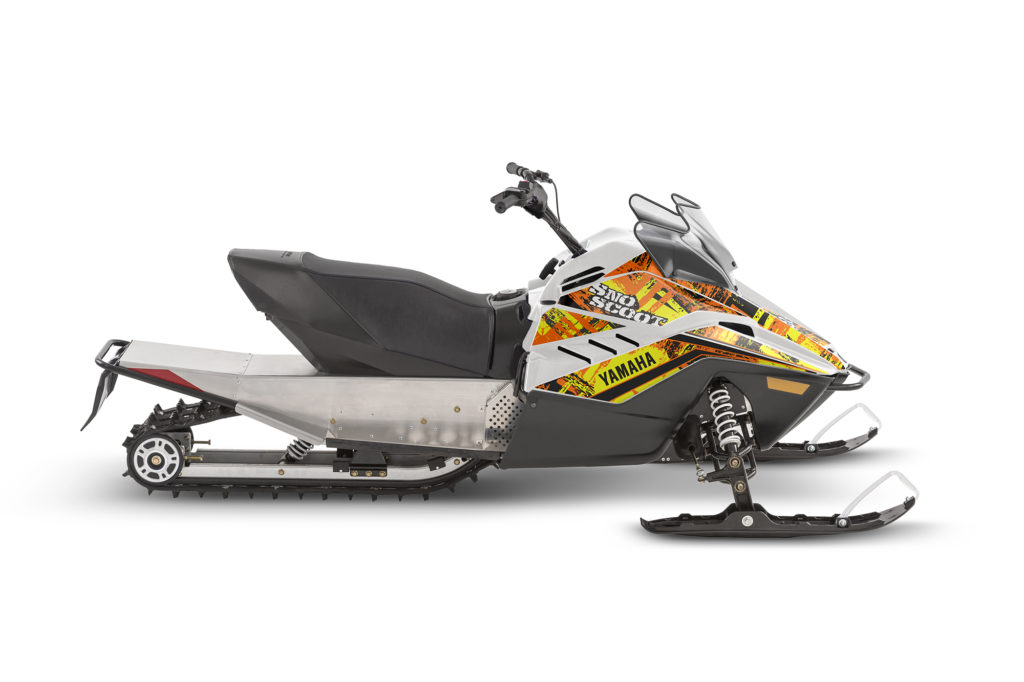
Already, most of the major race organizations have brought the 200 under their racing umbrellas, adding both stock and modified classes to their ranks for the upcoming season. The Canadian Snowcross Racing Association (CSRA) and Yamaha Motor Canada has announced a rider support program for the SnoScoot class. Targeted at racers 6-12 years of age, the program will offer additional support to these riders and their families who want to go racing with CSRA this winter. While the introduction of a “tweener” sled to circuits like CSRA will undoubtedly help keep young racers in the sport longer, it doesn’t address the bigger need of attracting riders and families outside our world to the sport itself.
That somewhat monumental task is exactly what Bryan Hudgin, Marketing Manager for Yamaha Snowmobiles is hoping to accomplish this winter with his concept of an extensive, coast-to-coast Yamaha SnoScoot demo tour. More than just an opportunity for snowmobiling families to experience the new 200, Bryan’s goal is to organize a mid-size community tour across the Snowbelt, and reach out to non-snowmobiling families to join Yamaha for a few hours of fun on the snow. Beyond giving kids a chance to ride the new SnoScoot, the events will target regional media in the hope of expanding the reach of the tour, and thereby delivering the message of having fun on snow to thousands of other families.
Currently, the tour is in planning stages with final locations and supporting dealers being worked out before going public. “This is something we all need,” Hudgin said, referring to the snowmobile industry. “Our hope is, through this initiative, we can give new families a taste of the sport…to show them it’s not only fun, but safe.”
Hudgin said one of the biggest challenges of the tour will be finding the “right” families and getting them to attend. It’s here where Bryan is asking existing snowmobiling families to get the word out, and possibly even bring a family unfamiliar with snowmobiling to a tour stop in their area. “I think we all know of a family who would enjoy this sport, but maybe they haven’t been exposed to it…the SnoScoot is the perfect vehicle to do it.”
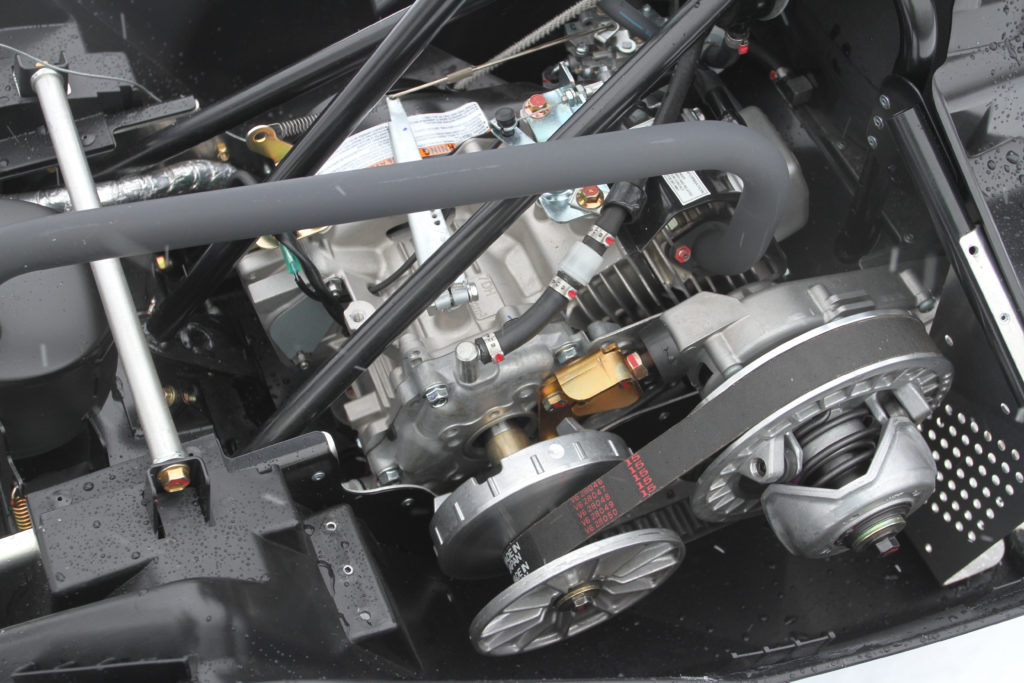
One of the technical attributes that makes the second generation SnoScoot standout and out-perform the original is the use of an rpm and torque sensing drive and driven clutch system. The design is much like a full-size sled, and features a roller, secondary jackshaft to driveshaft power transfer, and a cogged belt, replacing the traditional chaincase. This system allows the SnoScoot to always be in the “right” gear and deliver maximum power to the snow, making it truly deep snow capable.
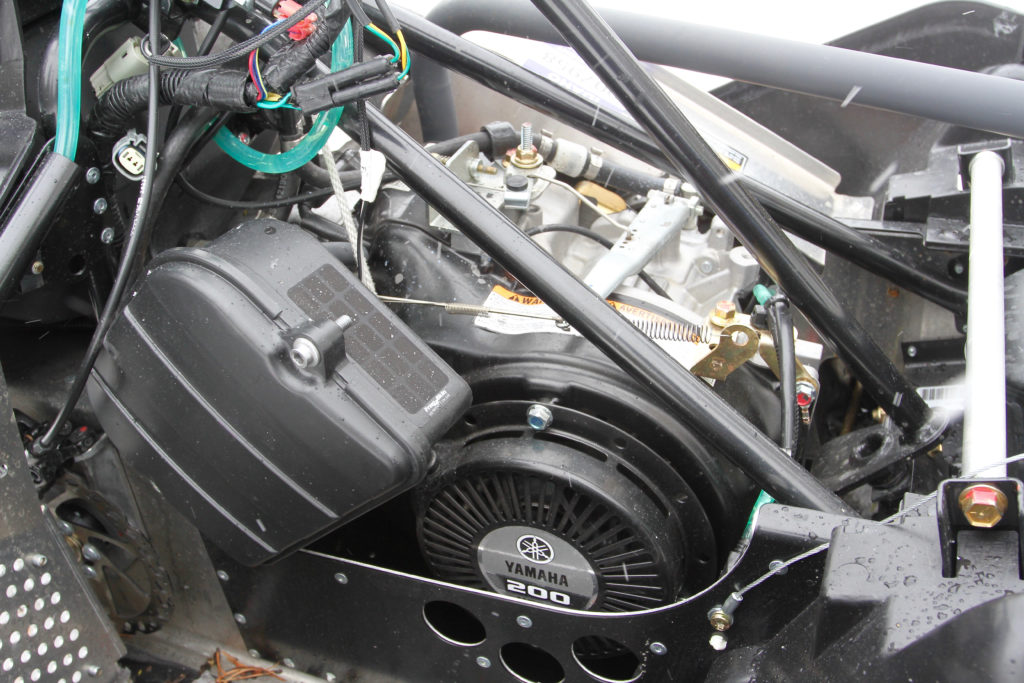
One of the biggest challenges for all manufacturers in powersports is engine sourcing. If you don’t build your own, you have to find someone who does. Shockingly, there are only a handful of engine builders in the world for powersports vehicles. Fortunately for the SnoScoot and the ZR200, Yamaha is one of the biggest. The 200 features a tweaked generator motor that has been allowed to rev higher to produce the 9-horsepower target. According to some speed shops we spoke with, there’s still more lurking inside.
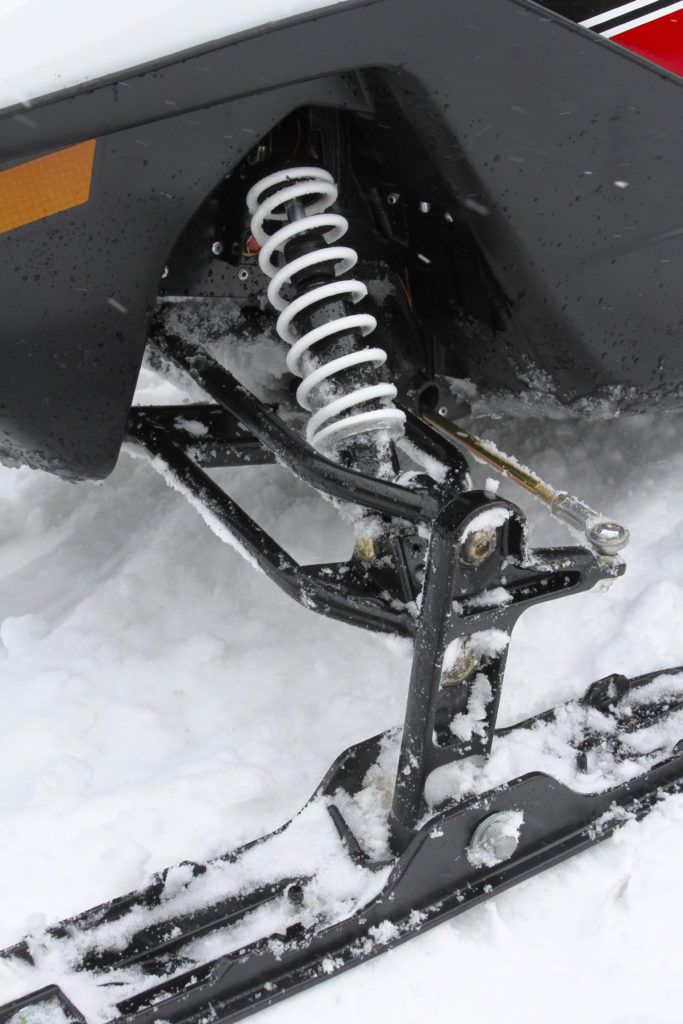
Everything about the new SnoScoot is legit including the dual A-arm front suspension and cast spindle. Many will remember the single leaf spring of the original SnoScoot…a simplistic approach to an over the snow vehicle that started life as a scooter.
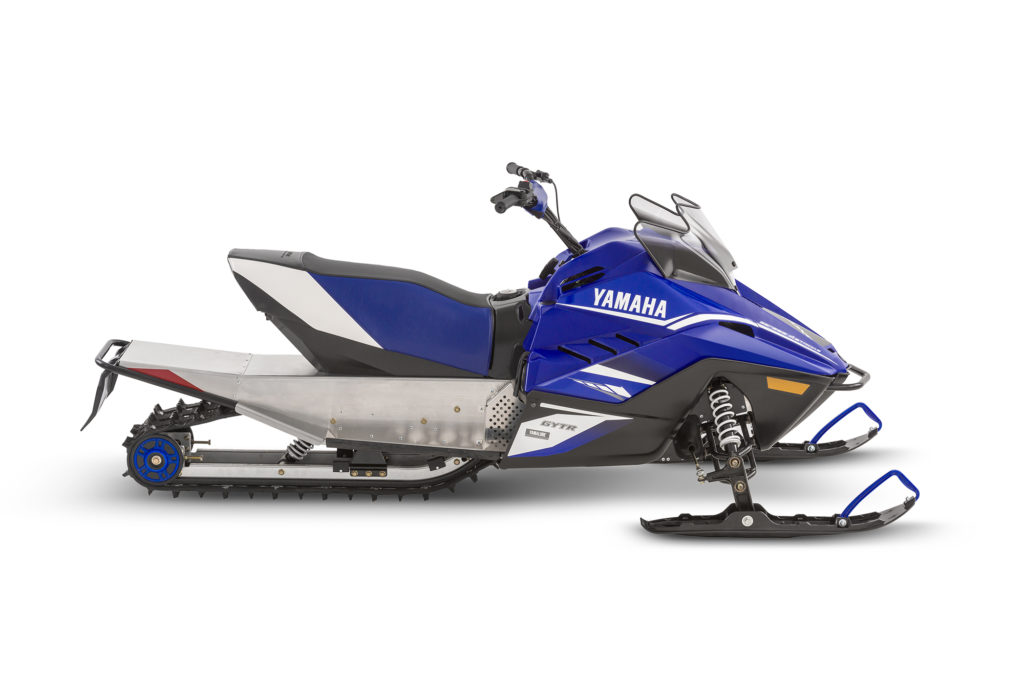
The SnoScoot is available in traditional Yamaha Blue and a somewhat non-traditional scheme called Flashy White. The colorful graphic package was the choice of youth focus groups conducted by Yamaha, as they looked for the best combination that was appealing to youth outside of motorsports families.
Often times, the controls on mid-size or youth focused vehicles are carry-over components from full-size machines, making them difficult to use. The SnoScoot however avoids this one-size-fits-most approach, especially in the braking department. Borrowing hydraulic disc brake technology from mountain bikes, this Hayes system is very responsive and delivers easy pull braking performance, and should suit riders with small hands very well.
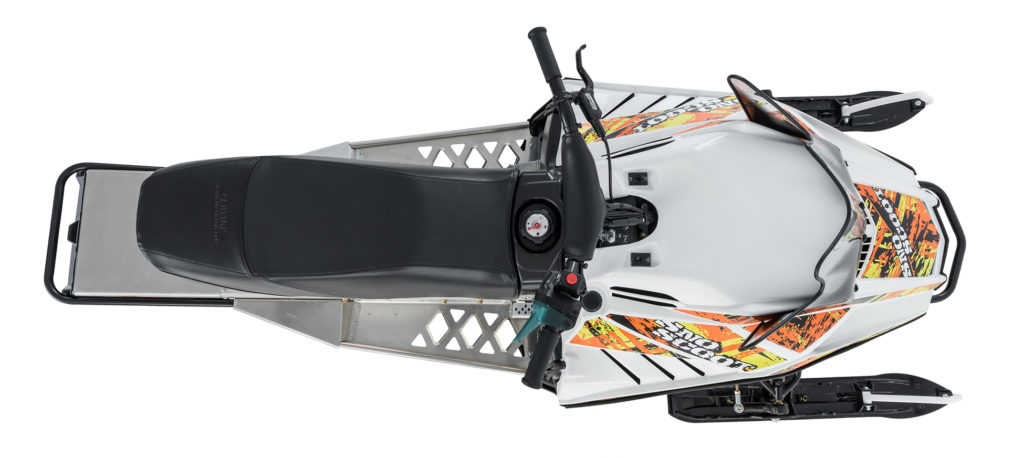
Straight forward and concise, the cockpit area of the SnoScoot has everything you need within easy reach, including a switch for the standard hand warmers. The view from the top may not give the SnoScoot the look of an adult capable sled, but with some tweaks such as bar riser, seat riser, and wider running boards…we can see ourselves laying down some laps in the backyard when the first snow arrives.
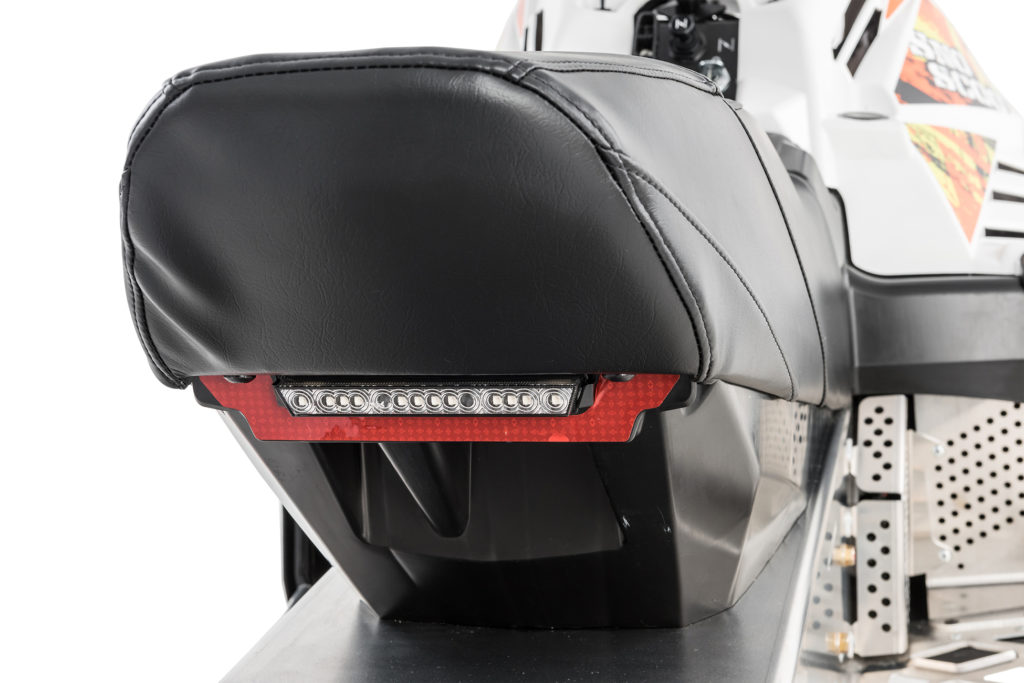
The SnoScoot and ZR200 meet the Snowmobile Safety Certification Committee (SSCC) standards to be classified as a “legit” snowmobile. This includes a functioning, high-output halogen headlight and LED taillight.
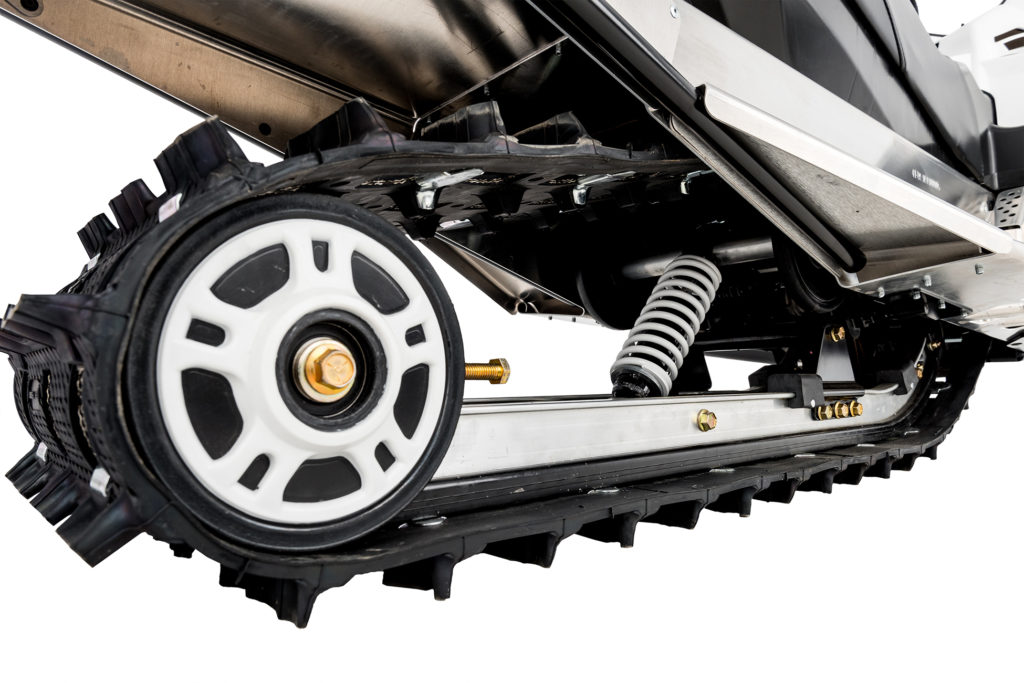
It looks like a legit rear suspension because it is one, complete with front and rear arm shocks with preload adjustment. There’s plenty of travel there too, and the 90-inch Camso track delivers ample traction and flotation with those 1-inch lugs. When you compare the vehicle size and weight to the footprint, you’ll soon realize why the SnoScoot can go just about anywhere.
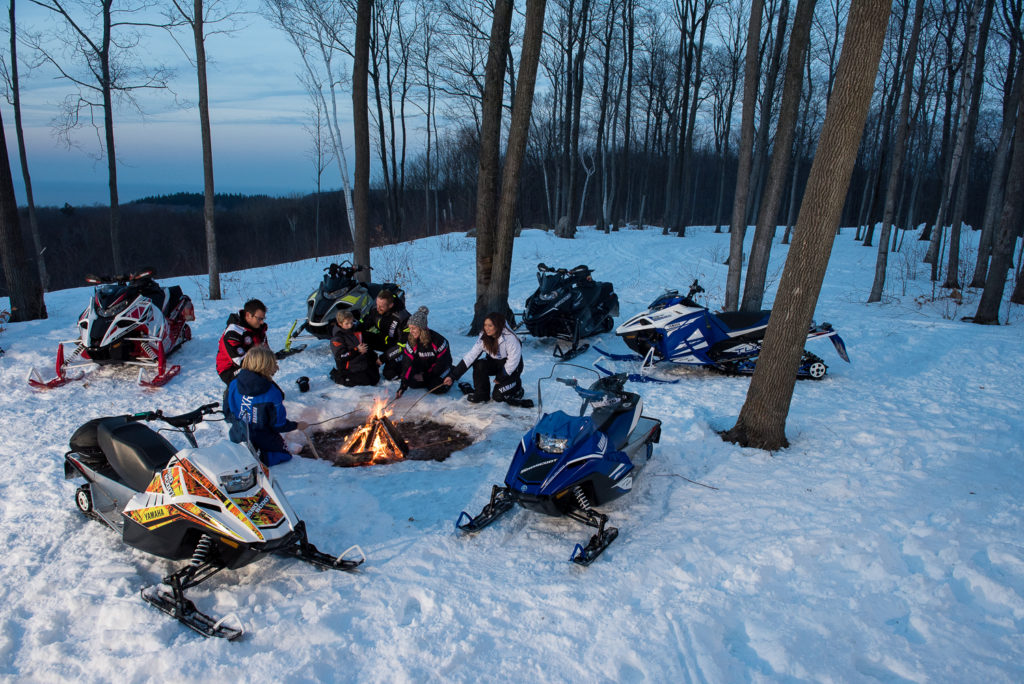
If the SnoScoot and ZR200 can successfully introduce snowmobiling to new riders, and reintroduce the value of family time back into the fabric of snowmobiling, it will go down as one of the most important snowmobiles in the history of the sport. But the SnoScoot alone can’t do it…it’s up to all of us to help make it happen.
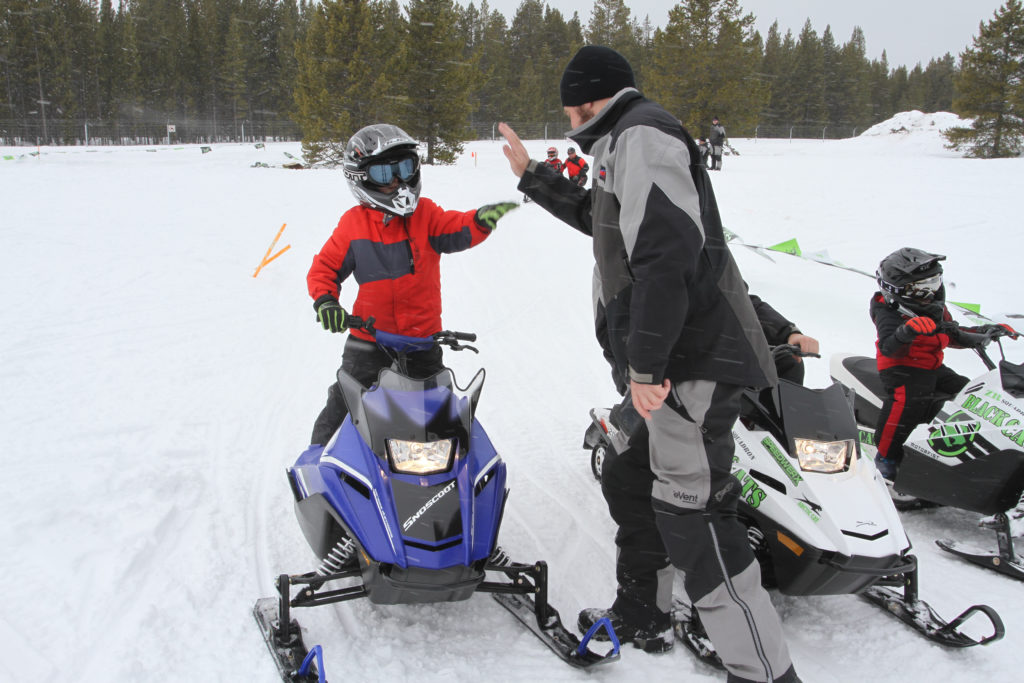
With an attractive suggested retail price of just $3799 (US) $4599 (CAN), the SnoScoot is destined to appear in many backyards of existing snowmobiling families this first year.




